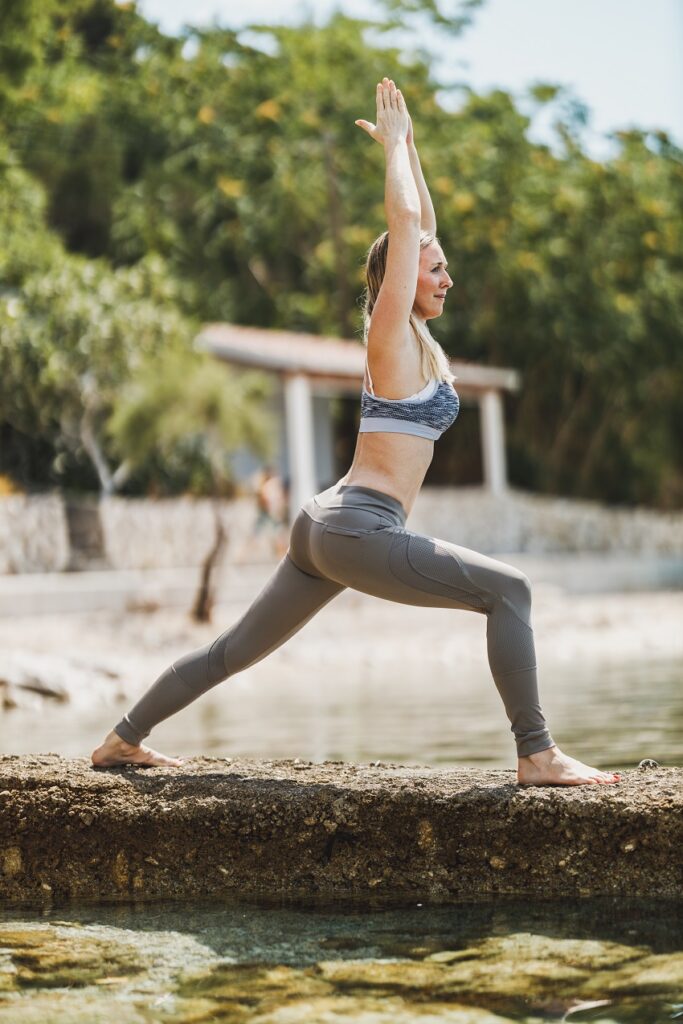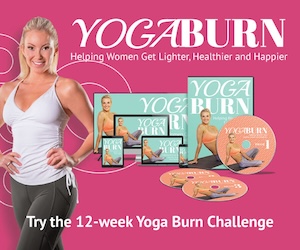High Lunge Pose: (Ashta Chandrasana)
Name: High Lunge Pose
Sanskrit: Ashta Chandrasana
Pronunciation: ahh-SHTAH chahn-DRAH-sah-nah
Alternative Names: Dragon Flying Low, Crescent Lunge Pose, Crescent High Lunge Pose, and Eight Point Crescent Moon Pose
Pose Level: High lunge pose (Ashta Chandrasana) is a beginner level asana in the yoga practice.

Anatomy Involved:
The High Lunge pose widens your hip flexors and revitalizes your spine. It helps tone the hamstrings, quad muscles, and knees.
Related Article: Yoga for Tight Hip-Flexors: Learn How to Improve Daily Mobility!
Benefits:
- Tone the core muscles as they propel you into and out of the posture.
- Lifting all sides of the trunk expands the side body and external obliques.
- Body balance and equilibrium are improved. It amplifies the calves, shins, and quad muscles.
- It fires up our hip muscles and hamstrings, making it the great posture for flexibility.
- Helps in boosting respiration, improves blood circulation, builds bone density, and enhances digestion.
Step-by-Step Instructions:
- Start at the top point of your mat with a Forward Fold;
- Come into Low Lunge by stepping your left foot back, lowering the left knee, and keeping your back heel elevated. If your knees are sensitive, put a blanket under them for cushioning and support. Remember that pushing and forcing yourself into the asana may result in perfect posture, but you won’t get the yoga advantages. Allow the appropriate muscles to engage and support;
- Inhale, rooting into your core, then raise, engaging the core and opening up your legs. Bring the inner thighs towards the center energetically;
- Then, bring your shoulders back and down by sweeping your fingertips up above and hands facing one another. Energetically stretch your chest, reaching your heart towards the sky;
- Root down with a firm heel-to-knee connection on the front foot;
- Lift your back leg from the floor as if performing mountain pose;
- Stay in this position for 3-6 breath cycles;
- Release gently and repeat on the opposite side.
Related Article: What is the Meaning of Pranayama: Pranayama Breathing Techniques
Pose Modifications:
For example, could the yogi use a supportive pillow, blanket. Is there another variation of the maneuver?
- For additional stability, perform a high lunge version with your hands on your thighs or pelvis.
- Arms stretched forward in a high lunge, palms facing one another, is a variation of Ashta Chandrasana.
- For a backbend-high lunge, extend your arms back and up.
- Try with front knee behind the ankle, instead of overtop.
- Slightly bend the back leg.
Contraindications:
To prevent injury, position the knee over your ankle. Don’t perform a high lunge if you feel pain during this pose.
If you have an injured back, shoulder or neck, practice this asana with a chair. If unsure, consult a medical expert or certified yoga instructor on clarity of pose.
Related Article: A Reference Guide To The Most Popular Chair Yoga Postures & Poses
Poses Commonly Transitioned too:
Ashta Chandrasana is usually transitioned into Forward Fold (forward body bend), Downward Dog (back inversion), and Cat-Cow poses (lower back curved and head up).
Poses Commonly Used Before Hand:
The low Lunge (back lung and bend), Gate Pose (opens ribs muscles), and Downward Facing Dog help warm up the body before the high lunge pose.




